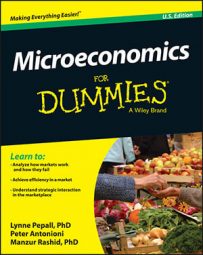Many economic activities require rather more than simply buying something and selling it on. These stages of creating the product involve more complex forms of organization than that of the sole trader.
Consider, for example, the set of production processes involved in making computers: dealing with contractors; managing international product development; creating the complementary products (software and operating systems); and managing the people and processes involved. As a result, a structure that places all these activities into one entity can bring a number of advantages.
Also, the LLC is only one potential structure among many in which people could do this. Over human history, people have used a number of other organizations to arrange production: armies, hierarchies — literally a rule of priests — and various kinds of state actors have all been involved in the production process. Some key advantages, however, apply to arranging production in an LLC:
Shareholders are liable only for losses up to the extent of their ownership stakes. By having many shareholders, the limited liability company structure allows for the spreading of risk among shareholders, which in turn allows the company to raise capital more easily.
Having a pool of capital sources for a company to draw upon is important to understanding how firms grow.
Although reasonably compelling reasons exist for some types of investor to favor the LLC structure, pooling activities into a single entity also provides an additional advantage. The eminent economist Ronald Coase first pointed out in the 1960s that in reality, using the market might not be free and costless, especially if you have to search for and transact with many different people in order to do business — which is, in itself, a cost.
Putting all these costs in one place has the advantage of ensuring that you incur them once only.
A limited liability company structure has one key implication: Owners are typically not the same people as managers. Instead, economists describe owners (that is, shareholders) as principals, and the managers as their agents. This distinction is important when you start to think about firms in the real world and how they behave in a marketplace.
Why would anyone want to separate ownership from management? Aside from the advantages of diffusing ownership in an LLC (which includes greater sources of capital for a company and some protection against losses for an owner), a shareholder may have shares in many different companies. Could such a shareholder be able to manage all those companies full time? Not unless the person was some type of shareholding superhero. So in each venture, companies need to appoint professional managers.
But this arrangement doesn't work perfectly, in all situations. The principal-agent problem is how we describe the kinds of problems that can arise.
Companies, which shareholders own but professional managers manage, feature two sets of interests. The shareholders' interest is for the firm to make as much profit as possible. The managers' interests, however, may include having as big an office as possible or as great a chance of staying in the job as possible. How do shareholders manage this problem?
Commonly, they choose to reward management with shares in the company, which has the advantage of aligning the interests of shareholders and managers. Steve Jobs, famously, was only paid $1 in salary when he returned to Apple as CEO in 1997 — the rest of his salary was paid in shares.
The evidence on management share schemes or employee share schemes is mixed, with the variation in schemes making it hard to draw an overall conclusion on whether or how these incentive schemes benefit firms.
Another, subtler aspect to this debate is that shareholders and managers aren't the only people with an interest in a company: Customers, civil society groups, unions, government, and others can all claim some degree of ownership of the company. This situation results in two competing views of companies:
The stakeholder model sees the firm as being the nexus of all societal interests.
The shareholder model sees only shareholders as being relevant or important.
Fashions for describing firms have changed several times in recent history. The American Academy of Management, for instance, pronounced in favor of the stakeholder model in the 1970s, changed to the shareholder model in the 1980s, and then back to the stakeholder model in the late 1990s.
Currently, management and firm theorists prefer the stakeholder model. However, to begin analyzing the firm and for quite a long way on the journey to understanding the firm, the shareholder model is likely to be what you will encounter in microeconomics. Consumers are the key stakeholders in microeconomics as they decide whether to buy goods or not, and at the same time they are also the shareholders in that they hold their savings in funds that provide capital to firms. In microeconomics, there is a saying: Consumer is sovereignty.

